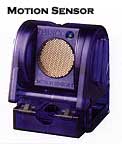By plotting an object's position on a graph at uniform time intervals, it is possible to draw conclusions regarding the motion of the object by observing the shape of the graph, and comparing it to similar objects.
In this lab, you will use a selection of toy cars and then asked to assess average speed of the vehicles. Any toy from your nearby "dollar store" will do for this activity, or students could be asked to bring in any type of battery powered vehicles from home.

Graph interpretation becomes more interesting and challenging with a wider variety of vehicle types - these toys often have strange behaviours and idiosyncrasies that make the task just a little more challenging.



 Technology Idea: Toy Car Motion
Technology Idea: Toy Car Motion


